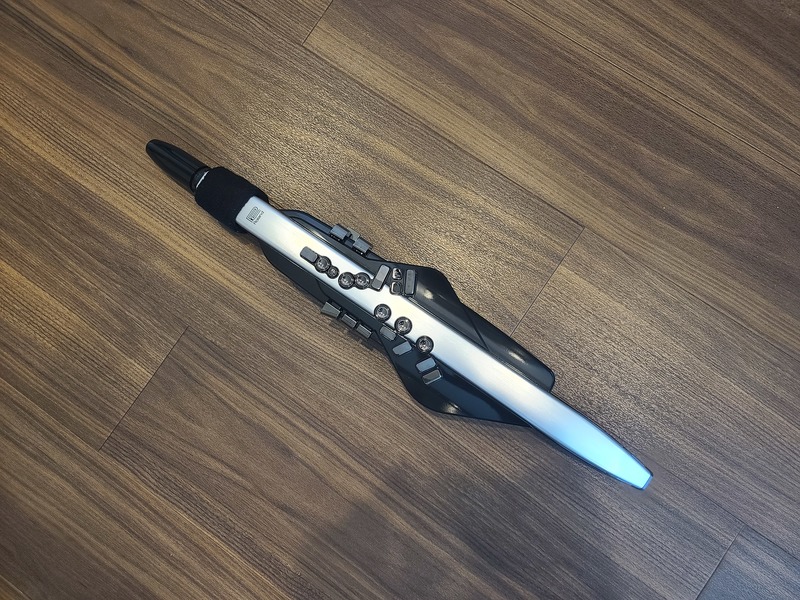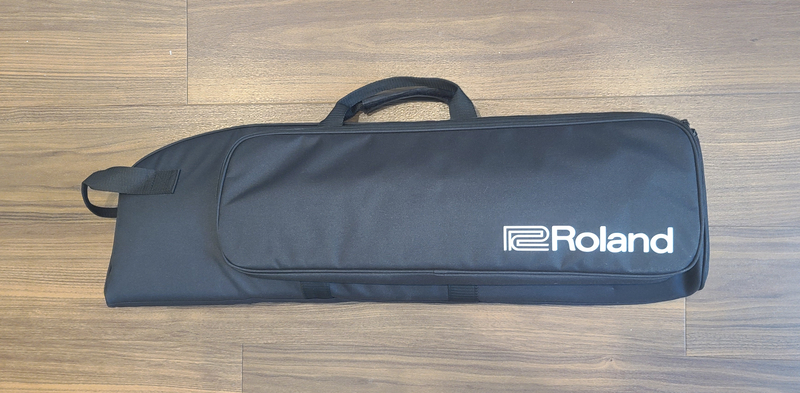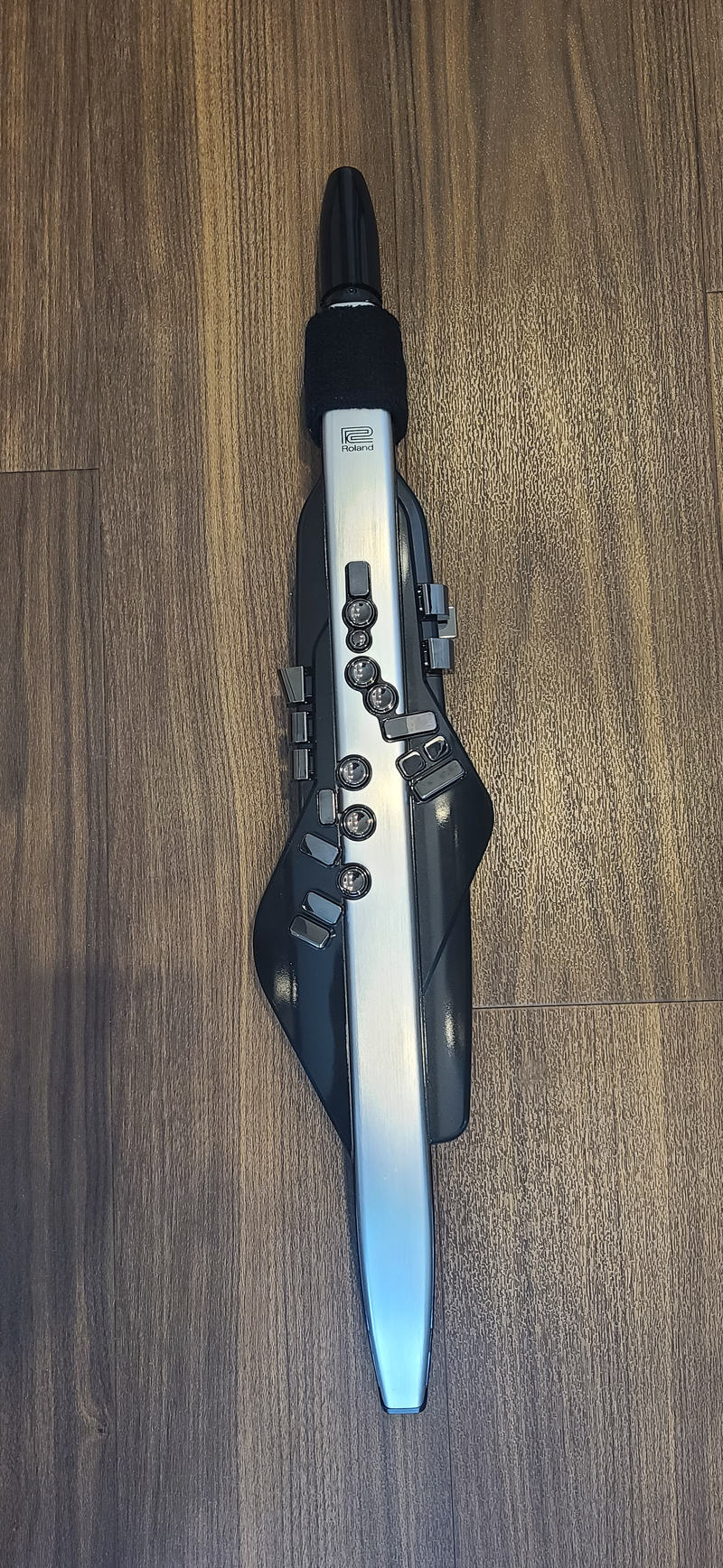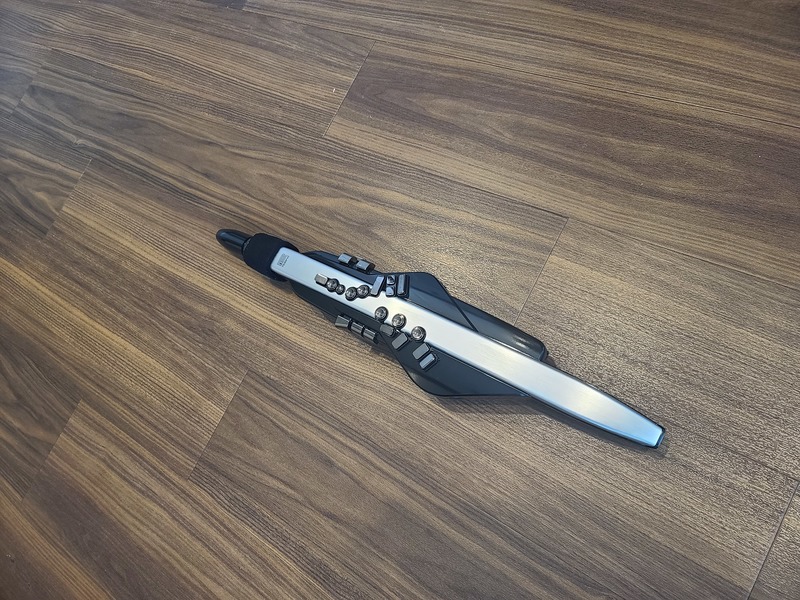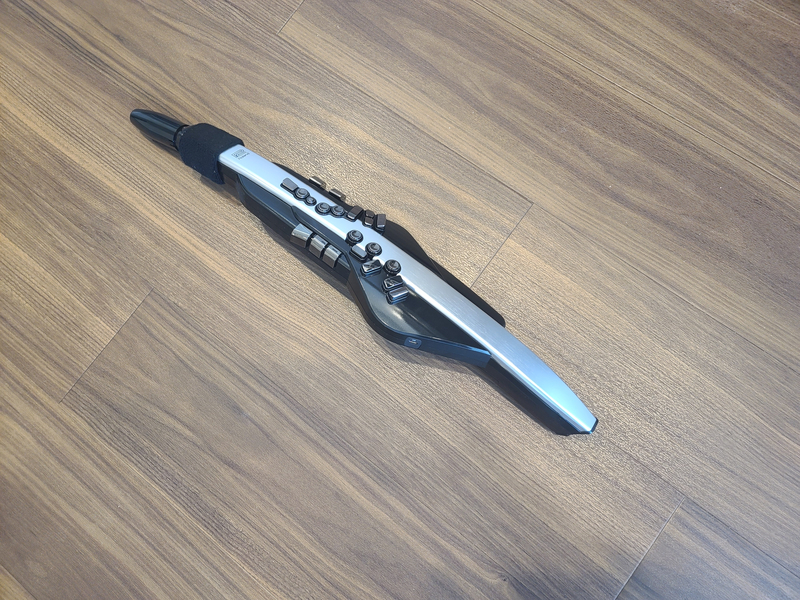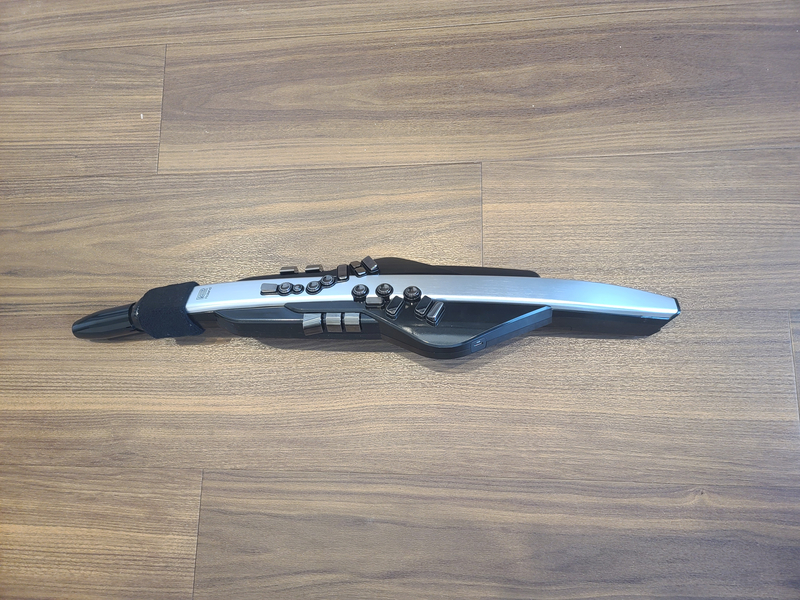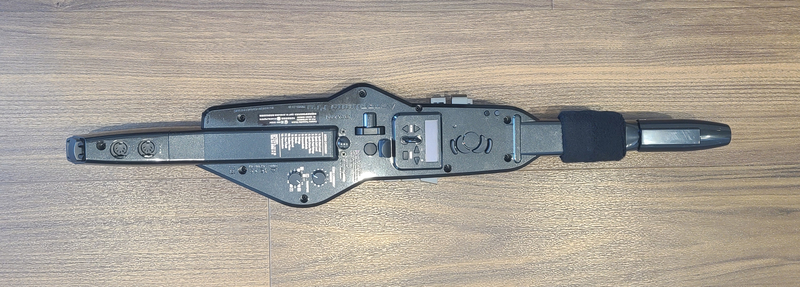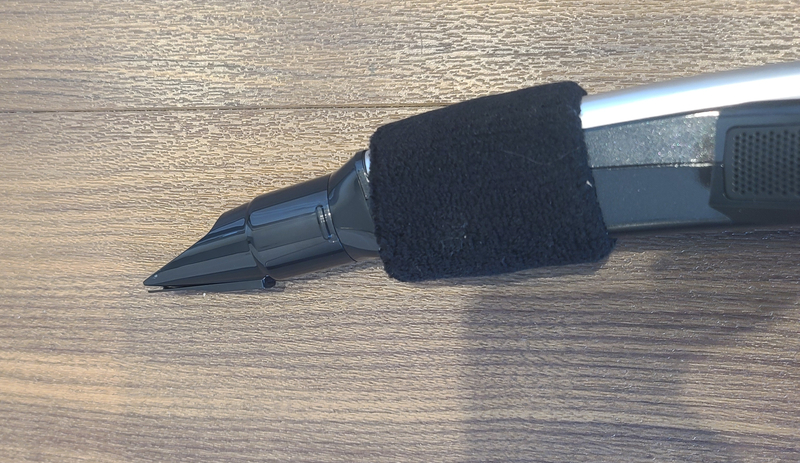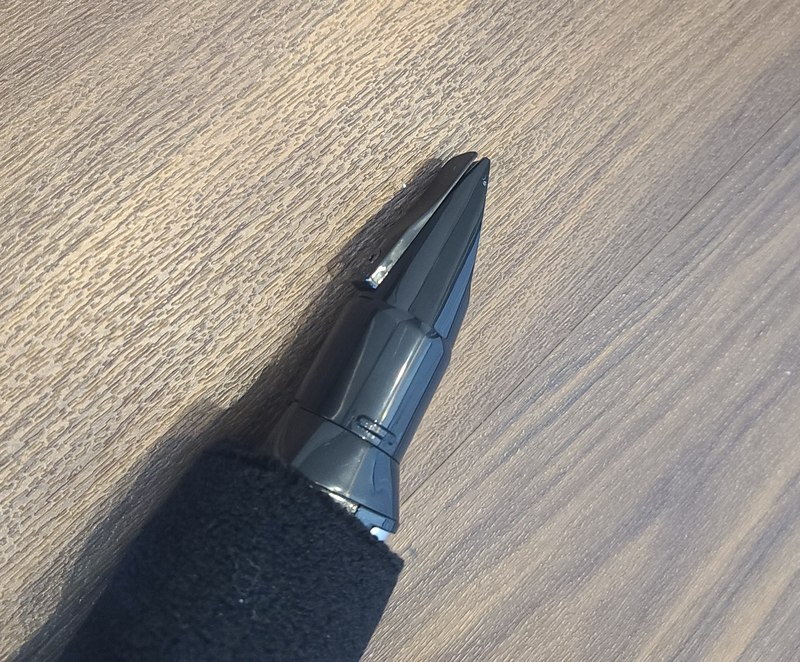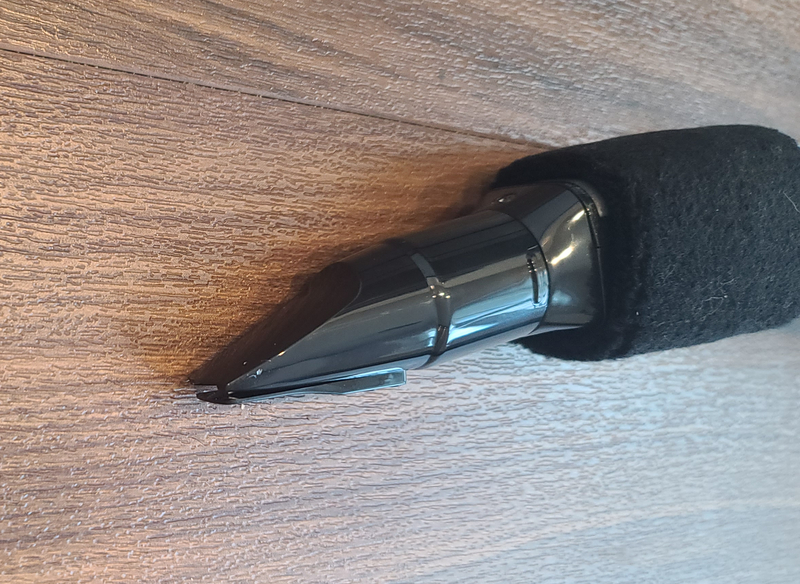
Baltimore Recorders.org
About the Electric Wind Instruments
Electronic wind instruments, like electronic keyboards, come in two varieties; ones with integrated synthesizers and ones without them. Having an integrated synthesizer is certainly convenient. You can play them through integrated speakers, plug in headphones, run a cable to a speaker, or pair them up to other devices with Bluetooth. However, the synth adds a bit a weight to the instrument. It should also be noted that integrated synths on current instruments are not sampler based, so if you are looking for instruments that have been sampled, then the available integrated synths will not help you. Instruments without synths produce no sound on their own. They are used to control other electronic instruments or synthesizers, and are commonly called controllers. These days it is easier to synthesize sounds than ever before. There are synth apps for cell phones, laptops have software synths, and there are dedicated hardware synths. Thus purchasing a wind controller without a synth is not a big drawback. Some hardware synths even specialize in synthesis for electronic wind instruments. One of particular note is the XpressO by DynaSample.
One aspect of electronic wind instruments that is apparent upon looking at them is the types of keys they employ. Some instruments have buttons, something like an arcade game. The Roland Aerophone is in this class. Others use plastic keys, such as Yamaha's instruments. Some instruments, such as the Sylphyo, have touch sensitive pads. The EWI by AKAI use capacitance based touch sensitivity. Lastly, some instruments use photo receptors to determine whether a hole has been closed. The Warbl uses this technology.
The physical keys, such as used on the Roland and Yamaha instruments, give you a place to rest your fingers when you are not playing a note. It helps orient your hand placement. The downside is that keys can have mechanical problems over time. Many of the older Yamaha instruments have key switches that no longer work. Keys can also make noise. The Roland Aerophones have been criticized for the noise that the keys produce.
One aspect of electronic wind instruments that is not visible are their breath sensors. Early instruments, such as the Steiner, had a sealed system that would detect pressure. You would not blow through the instrument. Instead you would lightly blow into the closed system to raise the pressure. The excess air would need to be released from the sides of your mouth. This is radically different than a traditional wind instrument, and many musicians disliked it. However, it is highly sensitive to breath pressure. The Berglund NuRAD uses this type of breath control.
Other electronic wind instruments detect breath pressure, but allow you to blow through them. This being said they do not take as much air as most acoustic instruments. Most wind controllers fall into this category. They include the instruments by AKAI, Roland and Yamaha.
Some home made instruments use microphones to detect the movement of air, and do not detect air pressure in the same fashion as the others.
Most of the electronic wind instruments on the market fill a particular niche. Many are marketed at people who play a specific type of instrument. The re.corder is unique as it is both an acoustic instrument and an electronic one. It is a fully functional recorder, and an electronic wind instrument. The included app allows you to produce sounds on your tablet or phone. It is one of the least expensive electronic wind instruments.
The Warbl, by Mowry Stringed Instruments, is shaped very much like a chanter on a bagpipe, and is aimed at the traditional music market. It uses fingerings for highland pipes. If your bagpipe playing is annoying the neighbors, then this is a good alternative. It is highly portable. The Warbl is a MIDI controller, it does not contain a synthesizer. It can be used with apps on Android, and IOS, or a computer. Its one downside is that it must connect to the device with a USB cable, as it uses it for power. So if you want to use the phone or other device with headphones, you need to ensure it has both a USB port and a headphone jack. Each instrument is hand made by Andrew Mowry.
The Yamaha YDS-150 is designed to be similar to a saxophone. It has extensive keywork, an internal synthesizer, a speaker and a brass bell. Its sax sounds are some of the best on the market. It also features an app that lets you edit the sounds. From a professional standpoint, the one feature that it lacks is a bite sensor. It is certainly not necessary, and there are pads for bending, but for an instrument that is trying to be similar to a sax, it is notable that it is missing. It also does not have a traditional midi cable connection, although it can be connected via USB.
The Sylphyo is a very responsive instrument. It has touch pads that allow pitch bends. Another one of its features are gyroscopic sensors. It can be programmed to change the sound when the instrument is rotated or tiled up or down. Despite these advanced features, it is appealing to amateurs. It has beginner friendly fingerings such as recorder and flute. Its form factor makes it appealing to novices, as it is small and highly portable.
Popular musicians have been using the AKAI wind controllers for decades. These include notables such as T-Square. The AKAI instruments are relatively small, light, and durable. They do not have keys that move. The EWI USB is one of the less expensive instruments on the market. The recently released EWI Solo has many of the features of the USB version but adds an internal synth and speaker. The EWI 5000 is their flagship version. It features more sounds than the Solo and also has wireless MIDI connection.
Roland has been putting significant resources into producing electronic wind instruments. Unlike Akai's offerings, Roland's have movable keys. Unfortunately, their implementation is not perfect, and the keys make a fair amount of noise when you are playing. This is not a major issue when playing amplified music. The synthesizers on the Roland instruments are some of the best on the market and are highly desired by popular musicians. Their flagship model, the Aerophone-30 Pro even has gyroscopic sensors so that it will respond to moving the instrument.
Like the Warbl, Berglund instruments are all hand made. They fill the void left by the Steiner ones that are no longer available. However, they are more than simply updated versions of Steiners. They are innovative, and have new types of bite pressure sensors. There is a waiting list to purchase the NuRAD.
Some instruments are more akin to retrofitted acoustic ones than ones built for digital from the ground up. The EMEO digital practice saxophone is such an instrument. If features a metal body and keys giving it more of the feel of a real sax. However, it is not identical to a sax. It does not have a bell, and is thus smaller and more portable than a sax. One major difference between it an a true reed instrument is that it does not have a bite sensor. Thus, it is really designed to work on fingering, as opposed to embouchure.
The following is a list of electronic instruments of the past and present.
- Lyricon II (out of production)
- Steiner EVI (EWI 1000) (out of production)
- Casio DH 100 (out of production)
- Casio DH 200 (out of production)
- Casio DH 230 (out of production)
- Casio DH 500 (out of production)
- Casio DH 800 (out of production)
- eCorder by Cantux Research (out of production)
- Akai 3020 (out of production)
- Akai EWI 4000 (out of production)
- Akai EWI 5000
- Akai USB EWI
- Akai EWI Solo
- DC02 Pro by KONIX
- Digital Wind Instrument by Carry-on
- EMEO Digital Practice Saxophone
- EWI-100 by Vangoa
- NuRAD by Johan Berglund
- NuEVI by Johan Berglund
- T.WI by Johan Berglund
- R1 by Robkoo
- re.corder by Artinoise
- Roland AE-30 Pro
- Roland AE-20
- Roland AE-10
- Roland AE-5
- Roland AE-1
- Sylphyo by Aodyo
- Synthphone (electronics mounted in an acoustic saxophone)
- Vindor ES1 (out of production)
- Vindor ES2
- Warbl
- Yamaha WX5 (out of production)
- Yamaha WX7 (out of production)
- Yamaha WX11 (out of production)
- Yamaha YDS-150
- Yamaha YDS-120
Photos of the Roland Aerophone AE-30 PRO.
Web design copyright 2015 Michael Berger
